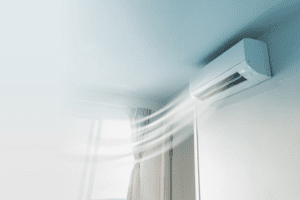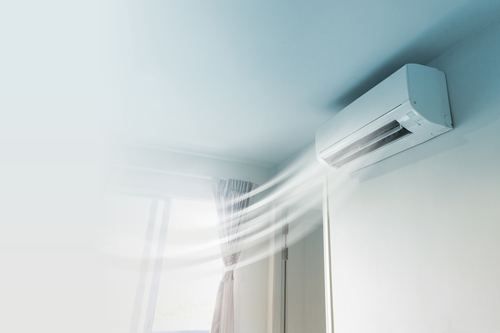So, the weather is finally warming up, and you’ve just turned on your air conditioner for the first time in a few months. You’re expecting to feel a cool breeze moving throughout your home and refreshing the occupants, but instead, you find yourself hit with a wall of warm, muggy air that only makes you more uncomfortable than you were before you turned on the system. What should you do when you discover that your AC is blowing hot air? Read this guide to learn what you should look at first when you encounter this problem.
Probable Causes of an AC Blowing Hot Air
-
Thermostat
 One of the most common reasons behind an AC blowing hot air is also one of the simplest and easiest to correct. There is a possibility that your system is only blowing warm air because your thermostat settings are incorrect. If you notice warm air coming from your system, the very first thing you should do is check to make sure the thermostat is set to the desired level.
One of the most common reasons behind an AC blowing hot air is also one of the simplest and easiest to correct. There is a possibility that your system is only blowing warm air because your thermostat settings are incorrect. If you notice warm air coming from your system, the very first thing you should do is check to make sure the thermostat is set to the desired level.
-
Airflow Problems
If cool air cannot flow through your system’s ducts in sufficient quantities, the system will be unable to cool your home suitably. There are two primary reasons why an HVAC will produce decreased airflow. Firstly, the air filters may not have been replaced or cleaned regularly, which can cause dirt or debris to enter the ducts and create congestion. Secondly, you may have neglected regular AC maintenance and allowed the coils in the system to become dirty over time. To fix these issues, replace your filters monthly and call a licensed professional for system maintenance once or twice a year.
-
No Power to Outside Unit
Your outdoor unit is the portion of the air conditioner that helps move cool air into your home, where the blower fan inside will circulate it throughout the ductwork. However, the outdoor unit is powered by electricity, and if it is not working the fan will only blow warm air into the ducts. If there is a problem with the circuit breaker or fuse panel that supplies power to the outdoor unit, you may require an electrician as well as an HVAC service technician to fix the problem.
-
Low Refrigerant Levels
Refrigerant is the chemical that allows your system to lower the temperature of the air in your home. As refrigerant is compressed, it changes states and draws heat out of the air around it, lowering the temperature. If the system is low on refrigerant, it will be unable to perform this process adequately, and the air that flows throughout the system will be too warm. Ensure that the refrigerant levels in the system are high enough by arranging for annual visits by a trained service technician.
-
Broken Return Ducts
The purpose of return ducts is to feed air back into your system once it has circulated through your home to enable reuse. However, a broken return duct may not collect treated air. Instead, it may collect warm air from outside or an unconditioned space such as the attic. If this problem occurs, a professional HVAC technician should visit your home and reconnect the vent so that it works correctly.
-
Compressor Failure
The compressor should be considered the heart of your air conditioner—without it, the system just cannot function. The compressor squeezes the refrigerant until it undergoes the change of state that facilitates the cooling process. However, the compressor is also a sensitive component that can be adversely affected by many things. The best way to avoid compressor failure is to solve minor problems in other parts of the air conditioner as soon as you notice them.
Conducting a Checkup on Your System When It Blows Hot Air
If you find that your AC is blowing hot air, take the following steps in this order:
- Check the thermostat settings.
- Check the air filters and replace them if necessary.
- Examine the circuit breaker and fuse box. If the breaker providing power to your outdoor unit is off, turn it on. If the problem looks more serious, do not attempt to fix it yourself. Call a service technician (and an electrician if they recommend one).
- If the problem still has not been solved, contact a licensed HVAC professional and have them conduct a thorough checkup of the areas you have not been able to reach.
Following the steps listed above will allow you to pinpoint the cause of the warm air blowing through your home. With luck, you will be able to identify and solve the problem without considerable time, stress, or expense. Keep this guide handy whenever your system fails to cool you sufficiently and use it to safeguard your AC during the upcoming summer.
Check with us here at Valley Comfort Heating and Air, our customers love our attention to detail and our friendly, affordable service. (707) 539-4533

